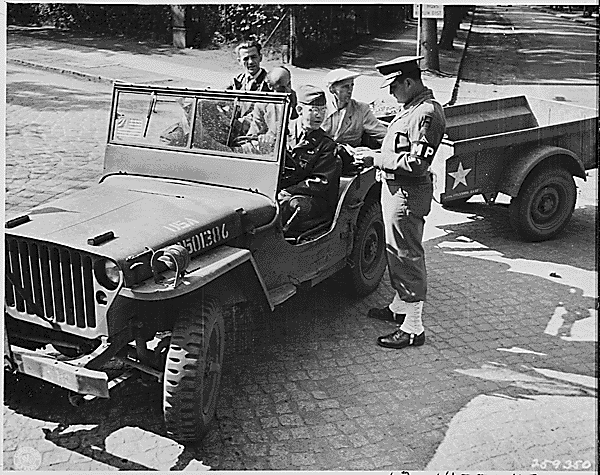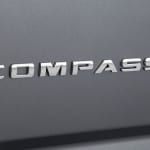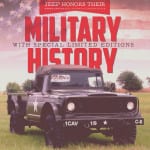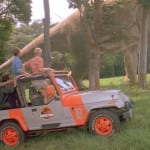Though Jeep has evolved over the years to become sleeker and more stylish, you can still see its roots even in the most luxurious models of Jeeps for sale and around the country. Jeep built its reputation and its customer base on its practicality and performance, and those are the key qualities of even the high-end models in the Jeep line today.
You can trace Jeep’s strongest qualities back to its beginning: Its development for use during World War II. Being founded as a military vehicle, Jeep was built to be tough, to navigate varied terrain and to carry heavy equipment.
Call to Action
Unlike many other automobiles that are on the market today, Jeep didn’t originate in a design room with the goal of dominating the consumer market to line shareholder pockets. Instead, it was developed in response to the U.S. military’s call for designs.
The United States had stayed out of World War II, but as the Axis powers began to make footholds in Europe, it became obvious that the government would not be able to keep out of the fray. So it started to secure provisions and make plans for the fight. The Army contacted 135 companies to ask for a working prototype of a reconnaissance car.
Only two companies answered the call: The American Bantam Car Company and Willys-Overland.
A Matter of Urgency
There was one little hitch with the Army’s request: Any company who answered the call needed to produce its prototype within 49 days. That means that companies had a little more than a month to design and manufacture an automobile that was ready for a combat zone.
The Army didn’t want just any vehicle. It had clear specifications for what it wanted in a prototype. The vehicle needed to be at least 1,300 pounds, have a payload of at least 600 pounds, have an engine with 85 pounds per feet of torque, and be four-wheel drive. The vehicle needed to be at least 6.25 inches off the ground with a wheelbase of no more than 80 inches and tread no more than 47 inches.
Finally, it needed a cooling system that would allow it to maintain a low speed for long periods without overheating.
Bantam reached out to freelance designer Karl Probst to come up with the concept, believing that Probst could modify an existing Bantam design. However, the Army soon increased the horsepower requirements for the vehicle, which would not work with any Bantam designs. Instead, Probst created a design using off-the-shelf parts for quick manufacture.
Meanwhile, Willys-Overland asked for more time to complete its prototype, but it was denied.
A Basic Plan
The Army ultimately liked Bantam’s prototype, but it was concerned about the company’s ability to produce it. Bantam was struggling financially, and in fact, Probst had agreed to create the Army design for free.
Instead, the Army turned over the Bantam prototype plans to Willys-Overland and Ford to modify and use as necessary to create their own prototypes. Willys created the Quad, and Ford created the Pygmy. Willys ultimately won the contract, however, since its prototype exceeded the power requirements with 105 pounds per feet of torque.
Because the Army needed these vehicles as quickly as possible, Willys agreed to allow another company to manufacture its design. Therefore, Ford also produced many of the Willys-designed Jeeps. The two companies manufactured 700,000 Jeeps during the war, with Willys providing nearly half of those.
Use During the War
Jeep vehicles proved to be some of the most useful equipment in the war. The U.S. military used them for everything from performing administrative tasks to tending to the wounded.
Every branch of the U.S. military used Jeeps, and so did Allied forces in Australia, Canada, Britain and New Zealand. They were used primarily to transport officials such as commanders and generals. However, they were also used to transport the sick from the battlefield, to lay communication lines, and transporting needed supplies. They were even used to tow other vehicles, and with the right adaptations, they could ride on railway tracks.
Jeeps were able to handle any terrain, including muddy and rocky terrain, so they were dependable in any situation. They were both powerful and dependable, ensuring that they could rise to the occasion in even the most challenging battle situations.
The Jeep Name
Early Jeeps were not known as Jeeps. In fact, it is unclear where the Jeep name originated. The early models built by Willys were known as the Model MB, and the models built by Ford were known as the Model GPW.
There are many urban legends about the origin of the Jeep name, but none of them have been substantiated. The most common is that the name Jeep came from the term “GP,” for general purpose vehicle. Joe Frazer, who was the president of Willys-Overland when the Jeeps were produced, took credit for the name by saying that he slurred the initials.
However, the initials in the Model GPW actually refer to the vehicle’s specification, such as the wheelbase size and engine. Another story claims the Jeep name came from a character in the Popeye comic named Eugene the Jeep. Eugene shared qualities with the Jeep, such as being small and able to maneuver deftly while also solving difficult problems.
Though the stories are interesting, the term Jeep was actually used as early as 1914 in testing new Army vehicles. An article in the Washington Daily News about Willys testing in 1941 also called the vehicle a Jeep.
Eventually, Willys-Overland applied for an official trademark of the Jeep name in 1943. It was finally granted the privilege in 1950, and it used the name in future production of the vehicle.
Civilian Use
Before World War II ended, Willys began marketing the Jeep for civilian use. Ads began in 1942 that referred to the “Jeep in Civvies” for civilians.
Advertising touted the strength and dependability of the Jeep as critical to the reconstruction effort after the war. Willys produced the first civilian Jeep, the CJ-2A, in 1945, and marketed it for construction workers and farmers.
The civilian version of the Jeep had a few design changes, such as an external fuel cap, a tailgate, larger headlights, and a spare tire mounted on the side.
When you shop for Jeeps for sale in Miami today, you can still see many of the elements of design from the early Jeeps. Of course, models like the Jeep Wrangler look the most like those early designs, but even the sleeker Jeep Cherokee maintains some of those design elements.
Driving a Jeep is like driving a piece of history. When you step into that bucket seat, you can imagine yourself fighting against the Axis forces and vanquishing evil from the world. At the very least, you can ride over even the roughest terrain with the same command of an Army general.






